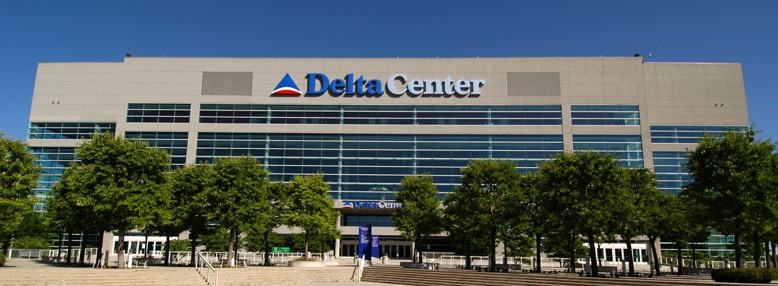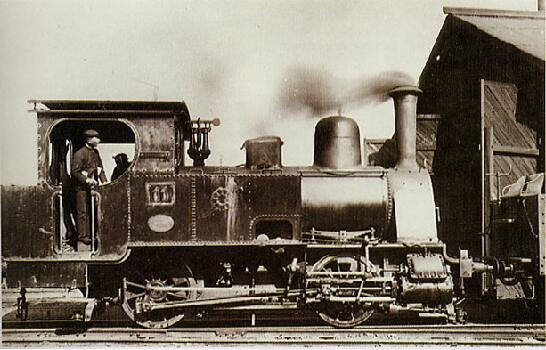|
Magarikane Station
is a railway station in Kawara, Fukuoka Prefecture, Japan. It is on the Tagawa Line, operated by the Heisei Chikuhō Railway. Trains arrive roughly every 30 minutes. On 1 April 2009, nearby Tagara High School acquired naming rights to the station. Therefore, the station is alternatively known as . Between 1899 and 1973, a short freight-only branch line ran from this station north to Natsuyoshi. History * 1885 - The station opens as Kawara station of Hōshū Railroad * 1901 - Kyushu Railway merges with Hōshū Railroad * 1907 - Kyushu Railway is nationalized * 1943 - The station is renamed to Magarikane * 1987 - JNR is privatizated, and the station becomes part of JR Kyushu and JR Freight * 1989 - The station becomes part of Heisei Chikuho Railway In the vicinity *Fukuoka Prefectural Tagawa High School *Fukuoka Prefectural Agricultural and Forestry High School *Magarikane Post Office *Muryōkō-ji Temple A temple (from the Latin ) is a building reserved for spiritual ri ... [...More Info...] [...Related Items...] OR: [Wikipedia] [Google] [Baidu] |
Kawara, Fukuoka
is a town located in Tagawa District, Fukuoka Prefecture, Japan. As of 2016, the town has an estimated population of 10,712 and a density Density (volumetric mass density or specific mass) is the substance's mass per unit of volume. The symbol most often used for density is ''ρ'' (the lower case Greek letter rho), although the Latin letter ''D'' can also be used. Mathematical ... of 240 persons per km². The total area is 44.50 km². References External links *Kawara official website Towns in Fukuoka Prefecture {{Fukuoka-geo-stub ... [...More Info...] [...Related Items...] OR: [Wikipedia] [Google] [Baidu] |
Heisei Chikuhō Railway Logo
The is the period of Japanese history corresponding to the reign of Emperor Emeritus Akihito from 8 January 1989 until his abdication on 30 April 2019. The Heisei era started on 8 January 1989, the day after the death of the Emperor Hirohito, when his son, Akihito, acceded to the throne as the 125th Emperor. In accordance with Japanese customs, Hirohito was posthumously renamed "Emperor Shōwa" on 31 January 1989. Thus, 1989 corresponds to Shōwa 64 until 7 January, and from 8 January. The Heisei era ended on 30 April 2019 (Heisei 31), with the abdication of Akihito from the Chrysanthemum Throne. It was succeeded by the Reiwa era as then-crown prince Naruhito ascended the throne on 1 May midnight local time. History and meaning On 7 January 1989, at 07:55 AM JST, the Grand Steward of Japan's Imperial Household Agency, Shōichi Fujimori, announced Emperor Hirohito's death at 6:33 AM JST, and revealed details about his cancer for the first time. Shortly after the d ... [...More Info...] [...Related Items...] OR: [Wikipedia] [Google] [Baidu] |
Heisei Chikuhō Railway
The is a third-sector operator of four railway lines in Fukuoka Prefecture, Japan. The railway's nickname is ''Heichiku.'' Principal investors Fukuoka Prefecture holds 27.5% of the stock in the railway. The cities of Tagawa, Nōgata, and Yukuhashi hold 14.8%, 6.6%, and 6.6% each. Lines *Ita Line (16.1 km) - The Nogata to Kaneda section opened in 1893, and the Kaneda to Tagawa-Ita section in 1899. The line was double-tracked in 1911, and freight services ceased in 2004. *Itoda Line (6.8 km) - The Tagawa-Gotoji to Itoda section opened in 1897 to haul coal and the Itoda to Kaneda section opened in 1929 to service a cement plant. *Tagawa Line (26.3 km) - The entire Tagawa-Ita to Yukuhashi line opened in 1895. * Mojikō Retro Kankō Line (2.1 km) - The Mojiko to Moji Harbour line opened in 1929, and freight services ceased in 2004. Despite a significant landslide in 2006, the line was reopened as a tourist line in 2009. The Mojikō Retro Kankō Line is classi ... [...More Info...] [...Related Items...] OR: [Wikipedia] [Google] [Baidu] |
Tagawa Line
The is a 26.3 km railway line owned by the Heisei Chikuhō Railway. The line runs west along the Ima River from Yukuhashi to Tagawa, all within Fukuoka Prefecture. History The line was first built in 1895 by the , which was merged in 1901 with Kyushu Railway. It was an important railway line to transport coal between the Chikuhō coal mine with in Kanda, north of Yukuhashi. Kyushu Railway was nationalized in 1907 and was merged into Japanese Government Railway, where it was named the Tagawa Line. In 1942, the line was extended south from Ita Station (now Tagawa-Ita Station) to Hikosan Station. The portion between Hikosan and Soeda Station was later reorganized into the Hita Line (now Hitahikosan Line) in 1956, and the section between Soeda and Ita was also merged into the same line in 1960 to form the current Tagawa Line. Between 1899 and 1973, a short freight-only branch line ran north from Kawara Station (now Magarikane Station) to Natsuyoshi. Ridership suffered w ... [...More Info...] [...Related Items...] OR: [Wikipedia] [Google] [Baidu] |
Yukuhashi Station
is a railway station on the Nippō Main Line in Yukuhashi, Fukuoka, Japan, operated jointly by Kyushu Railway Company (JR Kyushu) and the third-sector railway operator Heisei Chikuho Railway. Lines Yukuhashi Station is served by the Nippō Main Line and the Tagawa Line. Adjacent stations History The station opened on 15 August 1895. Passenger statistics In fiscal 2016, the station was used by an average of 6,381 passengers daily (boarding passengers only), and it ranked 30th among the busiest stations of JR Kyushu. See also * List of railway stations in Japan The links below contain all of the 8579 railway stations in Japan. External links {{Portal bar, Japan, Trains * Railway stations Japan Japan ( ja, 日本, or , and formally , ''Nihonkoku'') is an island country in East Asia. It ... References External links JR Kyushu official website Heisei Chikuhō Railway official website Railway stations in Fukuoka Prefecture Railway stations in ... [...More Info...] [...Related Items...] OR: [Wikipedia] [Google] [Baidu] |
2 Side Platforms
A side platform (also known as a marginal platform or a single-face platform) is a platform positioned to the side of one or more railway tracks or guideways at a railway station, tram stop, or transitway. A station having dual side platforms, one for each direction of travel, is the basic design used for double-track railway lines (as opposed to, for instance, the island platform where a single platform lies between the tracks). Side platforms may result in a wider overall footprint for the station compared with an island platform where a single width of platform can be shared by riders using either track. In some stations, the two side platforms are connected by a footbridge running above and over the tracks. While a pair of side platforms is often provided on a dual-track line, a single side platform is usually sufficient for a single-track line. Layout Where the station is close to a level crossing (grade crossing) the platforms may either be on the same side of the cross ... [...More Info...] [...Related Items...] OR: [Wikipedia] [Google] [Baidu] |
Railway Station
Rail transport (also known as train transport) is a means of transport that transfers passengers and goods on wheeled vehicles running on rails, which are incorporated in tracks. In contrast to road transport, where the vehicles run on a prepared flat surface, rail vehicles (rolling stock) are directionally guided by the tracks on which they run. Tracks usually consist of steel rails, installed on sleepers (ties) set in ballast, on which the rolling stock, usually fitted with metal wheels, moves. Other variations are also possible, such as "slab track", in which the rails are fastened to a concrete foundation resting on a prepared subsurface. Rolling stock in a rail transport system generally encounters lower frictional resistance than rubber-tyred road vehicles, so passenger and freight cars (carriages and wagons) can be coupled into longer trains. The operation is carried out by a railway company, providing transport between train stations or freight customer facilit ... [...More Info...] [...Related Items...] OR: [Wikipedia] [Google] [Baidu] |
Fukuoka Prefecture
is a Prefectures of Japan, prefecture of Japan located on the island of Kyūshū. Fukuoka Prefecture has a population of 5,109,323 (1 June 2019) and has a geographic area of 4,986 Square kilometre, km2 (1,925 sq mi). Fukuoka Prefecture borders Saga Prefecture to the southwest, Kumamoto Prefecture to the south, and Ōita Prefecture to the southeast. Fukuoka is the capital and largest city of Fukuoka Prefecture, and the largest city on Kyūshū, with other major cities including Kitakyushu, Kurume, and Ōmuta, Fukuoka, Ōmuta. Fukuoka Prefecture is located at the northernmost point of Kyūshū on the Kanmon Straits, connecting the Tsushima Strait and Seto Inland Sea across from Yamaguchi Prefecture on the island of Honshu, and extends south towards the Ariake Sea. History Fukuoka Prefecture includes the Old provinces of Japan, former provinces of Chikugo Province, Chikugo, Chikuzen Province, Chikuzen, and Buzen Province, Buzen. Shrines and temples Kōra taisha, Sumiyoshi-jinja, ... [...More Info...] [...Related Items...] OR: [Wikipedia] [Google] [Baidu] |
Japan
Japan ( ja, 日本, or , and formally , ''Nihonkoku'') is an island country in East Asia. It is situated in the northwest Pacific Ocean, and is bordered on the west by the Sea of Japan, while extending from the Sea of Okhotsk in the north toward the East China Sea, Philippine Sea, and Taiwan in the south. Japan is a part of the Ring of Fire, and spans Japanese archipelago, an archipelago of List of islands of Japan, 6852 islands covering ; the five main islands are Hokkaido, Honshu (the "mainland"), Shikoku, Kyushu, and Okinawa Island, Okinawa. Tokyo is the Capital of Japan, nation's capital and largest city, followed by Yokohama, Osaka, Nagoya, Sapporo, Fukuoka, Kobe, and Kyoto. Japan is the List of countries and dependencies by population, eleventh most populous country in the world, as well as one of the List of countries and dependencies by population density, most densely populated and Urbanization by country, urbanized. About three-fourths of Geography of Japan, the c ... [...More Info...] [...Related Items...] OR: [Wikipedia] [Google] [Baidu] |
Naming Rights
Naming rights are a financial transaction and form of advertising or memorialization whereby a corporation, person, or other entity purchases the right to name a facility, object, location, program, or event, typically for a defined period of time. For properties such as multi-purpose arenas, performing arts venues, or sports fields, the term ranges from three to 20 years. Longer terms are more common for higher profile venues such as professional sports facilities. The distinctive characteristic for this type of naming rights is that the buyer gets a marketing property to promote products and services, promote customer retention and/or increase market share. There are several forms of corporate sponsored names. For example, a ''presenting sponsor'' attaches the name of the corporation or brand at the end (or, sometimes, beginning) of a generic, usually traditional, name (e.g. Mall of America Field at Hubert H. Humphrey Metrodome); or, a ''title sponsor'' replaces the origin ... [...More Info...] [...Related Items...] OR: [Wikipedia] [Google] [Baidu] |
Kyushu Railway
was a company that built and operated railways in Kyushu, one of four main islands of Japan. Most of its lines came under the control of Japanese Government Railways following nationalization in 1907, and many are now operated by Kyushu Railway Company. History The company was incorporated on August 15, 1888 in Fukuoka, Fukuoka. The first of the railway, between Hakata Station in Fukuoka and Chitosegawa temporary station in Asahi, Saga (near Kurume, Fukuoka), opened on December 11, 1889 as the first railway in Kyushu. The company expanded the railway by means of both construction and acquisition of other companies. As of 1907, it operated of railways in Fukuoka, Kumamoto, Nagasaki, Ōita and Saga prefectures in northern Kyushu. On July 1, 1907, the entire operation of the company was purchased by the government of Japan under the Railway Nationalization Act. Consequently, the company was dissolved. List of lines Rolling stock A special coach made by German car manufacture ... [...More Info...] [...Related Items...] OR: [Wikipedia] [Google] [Baidu] |
High School
A secondary school describes an institution that provides secondary education and also usually includes the building where this takes place. Some secondary schools provide both '' lower secondary education'' (ages 11 to 14) and ''upper secondary education'' (ages 14 to 18), i.e., both levels 2 and 3 of the ISCED scale, but these can also be provided in separate schools. In the US, the secondary education system has separate middle schools and high schools. In the UK, most state schools and privately-funded schools accommodate pupils between the ages of 11–16 or 11–18; some UK private schools, i.e. public schools, admit pupils between the ages of 13 and 18. Secondary schools follow on from primary schools and prepare for vocational or tertiary education. Attendance is usually compulsory for students until age 16. The organisations, buildings, and terminology are more or less unique in each country. Levels of education In the ISCED 2011 education scale levels 2 and 3 c ... [...More Info...] [...Related Items...] OR: [Wikipedia] [Google] [Baidu] |




